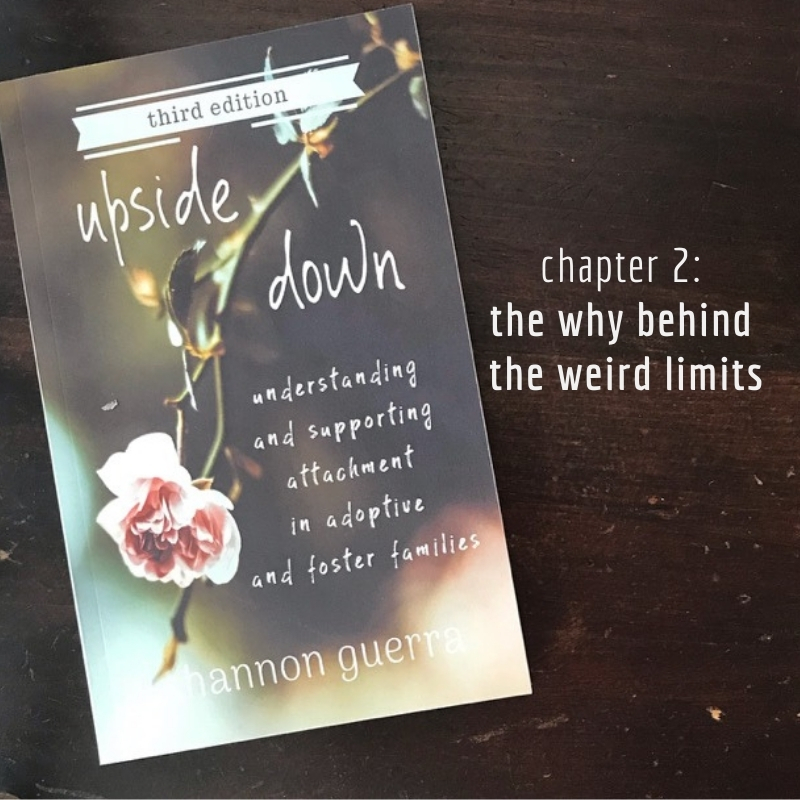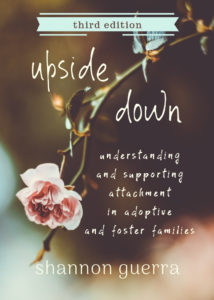Other than all of the times I’ve walked into the protruding foot of the coffee table and smashed my toes so hard that I saw lights sparkle, I’ve never broken a bone. Never worn a hard cast. So, unless broken toes count – and I don’t think they do, even though my husband claims I swore in tongues once during a particularly clumsy maneuver (he could be exaggerating), I really have no idea what I’m talking about.

But as far as my primitive knowledge goes, a broken bone – as long as it’s not a toe – is usually covered with a cast in order to protect it from further harm while it heals. No one touches the bone after it is set and covered with that cast, and the bone has the time it needs to regrow and the safe environment to keep it from hurting or grating itself or the tissue around it. But people can touch the cast – in fact, they are encouraged to. They sign it, draw on it, and show their love for the broken person by giving great attention and love to the cast.
And like that broken bone, the broken child is set into their family for healing and protection. Parents of children with attachment issues are the cast that protects them while they heal. They are firmly wrapped around these children as a sturdy wall that will take all the beatings necessary to keep the broken ones inside safe while they regrow. It is crucial that no one touch the child until it is safe to do so, both for the child’s sake and those surrounding the child – there are some very sharp edges to be cautious about.
We ask that you let Mom do the nurturing and heart healing rather than step in and fill him up so he can push Mom’s love away longer. They say “the best way to show love to a child is by loving their Mom.” The professionals tell us that RAD family members need seven hugs a day to facilitate healing – feel free to offer your healing hugs to Mom anytime!
The best way to show love and support for the child is to love the cast…their parents. Hug them, encourage them, tell them they are doing an amazing job. Don’t touch or expose the broken bone, though, until they say it’s okay.
There are many different special needs that aren’t visibly obvious – some medical, some not – and attachment is one of them.
It takes emotional effort to explain these needs and boundaries. Believe me, we know it sounds weird, and we live this weirdness out daily, and it is frustrating and sad for us as parents to have to ask other adults to not interact with our children. It is particularly painful for us (and our children) to have to explain this to people in front of them. But sometimes it must be done. We try to do it lightly if they are there, but this backfires sometimes, causing some people to not understand the seriousness of the issue at all.
So, since it can’t be seen, let me illustrate:
Imagine a pendulum, settled in the middle. This pendulum is our child, and we are standing right with them at the center, the place of rest and equilibrium.
One catch, though – attachment issues are a special need. For our illustration, that means that this particular pendulum is magnetically charged…so are we. And so are other adults.
Here we are, standing with our little child, attaching. Bonding, sticking together as magnets do, though we still do have some, oh, magnetic friction.
Another adult comes near and an interesting thing happens: The presence of this adult – even an adult who respects boundaries, understands the situation, and kindly ignores our attachment-challenged children – creates a little pull on the pendulum. It’s no biggie, though, because this adult knows what’s going on and does not dote on, speak to, or otherwise engage our child. This marvelously helpful person does not respond to the stares from him or other attempts to make eye contact or attract attention. We have our conversation, and they leave. Our child settles right back with us, with minimal to no swinging afterward. It’s weird, yes, but it works.
Something far more interesting happens when an adult who does not understand or respect their special needs comes near. They approach, and the little magnetic pull is still there, but this person immediately flashes a glowing smile at our child. Or they ruffle his/her hair, saying, “Oh, he’s so cute!” or, “What a doll!”
These are totally normal, sweet, acceptable interactions to have with most kids. We have four kids that won’t bat an eye at this, and they’ll be fine afterward. We gave birth to them, they had a healthy beginning, they are attached to us. They aren’t magnetic and they won’t swing.
But our children with attachment issues feel a very strong tug for every response. They pull away from us, and they pull out masks that they never wear in normal life at home, like the wide-eyed innocent stare, the puppy dog eyes, and the sad pout. These are saved for special occasions when another adult is near.
In the span of just a few minutes, they are drawn farther and farther from us. They are pulled toward this other adult who is actually decreasing our own magnetism as their own increases. The pull is so strong that our magnetic child flips – the poles switch around, everything turns upside down, and we are no longer attractive, but repellant to our child.
We can’t go with our child as he’s being pulled away. We must stay in equilibrium, so he knows he can find us later when he turns back around and this all shakes out.
And there will be shaking. Watch:
This person leaves. Bam! Like a flipped switch, the magnetic pull is cut off. Gravity takes over, but unfortunately, the parents are still repellant. Our child who has swung so far away from us starts to swing back, toward me, at me, past me again, hot and cold, almost as far away now in the opposite direction. And back again. And back again. Ad nauseam.
He oscillates wildly for days or weeks afterward, until equilibrium is finally restored. And the person who created the pull is long gone, with no clue about the havoc that took place after they left, smiling about the charming impression the child gave them, and a little irritated with the uptight, controlling parents who just aren’t who they used to be.
You don’t have to see it to believe it. You will probably never see it.
It’s so hard because their viewpoint is “She went 8 years without love and attention. Let’s make up for that!” and I’m like no. You have to stay away.
I wish people really understood that we have to do things differently. And that those differences wouldn’t weird them out or push them away. I also wish they understood that the “rules” aren’t in place to alienate them or keep them away from my daughter – they are to protect our new relationship together. What they could really do to help attachment would be to avoid interaction with her unless given permission. I wish I could put a sign on her that says “please do not hold me, touch me, or give me things.” Lol.
– adoptive mama
Ha ha. No, seriously.
Here’s why:
A little girl with a severe allergy goes to class, and there’s a pizza party. Her parents already provided lunch for her, but the teacher feels bad about the girl missing out, doesn’t think the allergy is that serious, and serves her pizza anyway. But after class, while the teacher is oblivious and the rest of the kids have gone home happy, that little girl is rushed to the emergency room.
It would be ridiculous, of course. There would be uproar and reprimands. There might be legal action. Most people are aware of severe allergies, diabetes, and other physical issues that cannot be fiddled around with. We don’t have to understand all of the biological details in order to know that boundaries must be respected.
The same is true for attachment issues and other unseen special needs. If a parent says their child has special needs, trust them and not just the child’s appearance or your own experience. So much is at stake. There’s no room for someone to disregard the boundaries simply because it seems unusual or mean.
The next post will share a little from adoptive moms about what the “emergency room” looks like. Lights sparkle, and sometimes there’s even swearing in tongues. No exaggerating.
____
The entire book is available here, with a discount for multiple copies (and if you need more than 15 copies, checkout our wholesale page). You can also find Upside Down in audio here, and the first three sections are free.
If you’d like to subscribe to get posts right in your inbox, you can do so here. Thanks!


Pingback: upside down: part two | Copperlight Wood | Our Everyday Adventure
Okay, so how does one still have relationships with your attached kids? Example- If I usually smile and talk to your kids at church or hand out lollipops to my neighbors do I have to stop that so the unattached don’t feel bad and disappoint the attached? I don’t know you in real life but I think that people need to know what the cocooning looks like for the rest of the family and how to do things in public, etc. Thanks!
Hi there! I’m glad you’re reading this series. This is a great question. In my opinion, if someone has a relationship with our attached kids, then they should treat them the same and let us, the parents, worry about our unattached kids. When in doubt about any situation, always ask the parents (as discretely as possible) instead of assuming anything. Thanks!
Thanks for answering. I have been reading here since you adopted and got hooked when you did the 30 days of blogging. You have a way with words.
Aww…I appreciate that. Thanks so much.
So well written, and I always learn so much from you. Thanks!
This is very informative! Thank you. For someone looking into adoption and in a community of families who adopt, any insight on how long this stage lasts? How long are you in a family cocoon? I am sure it is a different length for every child, but is there an average time when it becomes safer for other adult interactions? Are there signs that let you know you can begin to remove the cast?
Hi Michelle…good questions that I ask myself often, 20 months into this. I don’t think there’s an easy answer for any of us – for our family, I think we jumped the gun and allowed some interactions that we shouldn’t have (and other interactions happened because of people not respecting boundaries) and I think both of those cost us some time. My thoughts on removing the cast depend on two things – the acceptance of boundaries by the adults around our kids (so we can trust them to not confuse our kids unnecessarily), and the behavior of our kids after any interaction like that (so we know they can really handle it). Not every child goes through the amount of trauma that ours did, but other children have gone through more…so there’s really no average time. The one “formula” that people reference often, though, is to take into account the amount of time the children lived without you (for us, almost seven years) and consider that it may take the same amount of years for them to overcome that. Hope that helps. :)
Beautiful! Thank you for painting such a clear picture!
Thank you.